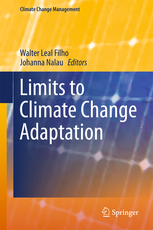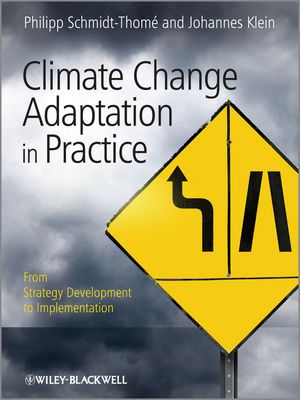Limits to Climate Change Adaptation
Reviewed by Michael Raleigh and Dr. Kelly Dunning, Conservation Governance Lab, Auburn School of Forestry and Wildlife Sciences
What are the biophysical, sociocultural, and economic limits that are emerging or have emerged in areas most vulnerable to climate change?
Limits to Climate Change Adaptation, edited by Walter Leal Filho and Johanna Nalau, Springer International Publishing, 2018, 410 pp
Research on climate change adaptation has grown over the past decade as global responses have shifted from avoidance seeking to risk management. Discussions of adaptation inherently involve limits or points at which objectives cannot be met due to increasing risk from a changing climate. The IPCC’s Fifth Assessment Report defined limits as biophysical, sociocultural, and economic. The editors note the IPCC’s call for further research into types of limits and have responded by examining limits on a regional scale. The purpose of their book is to explore limits that are emerging or have emerged in areas most vulnerable to climate change.
The book is divided into four sections, each focusing on a specific region: Asia, Africa, Australia, North America, and Europe, and the Pacific region of small island states. The regional focus makes it easier for researchers to find material relevant to their own work. Chapters of particular interest include an interdisciplinary analysis of limits to adaptation within Zimbabwe (6) and perceived limits within the pastoral communities in the Sahel (7).
A novel conceptualization of psychological limits takes the definition beyond environmental and into the realm of socially constructed risks (12), and analysis within small island developing states brings awareness to the interdisciplinary nature of limits (15). The last section is particularly crucial and emphasizes current, ongoing limits to adaptation within highly vulnerable Pacific island-states and atolls. Each chapter succeeds in broadening the IPCC’s definition and recognizes the complex factors comprising limits to adaptation. The broadly regional organization of the book suggests that limits can be defined on large scales; however, there are strong cultural differences between countries within each defined region that undoubtedly impact limits. The organization of the book would have benefited from a narrowing of scope (i.e., Southeast Asia, Central Africa) to prevent overgeneralization. Organization aside, the book far exceeds the IPCC’s call for a broader definition of limits. Filho and Nalau have presented a guidepost illuminating limits to adaptation in the most vulnerable parts of our world. The book is at its best when it makes regional climate adaptation science almost visceral. The imagery of the loss of cattle in pastoralist communities in a rainstorm brings the regional focus to a very human scale, evoking an earnest emotional response in the reader and conveying the seriousness of the climate crisis.


